Image
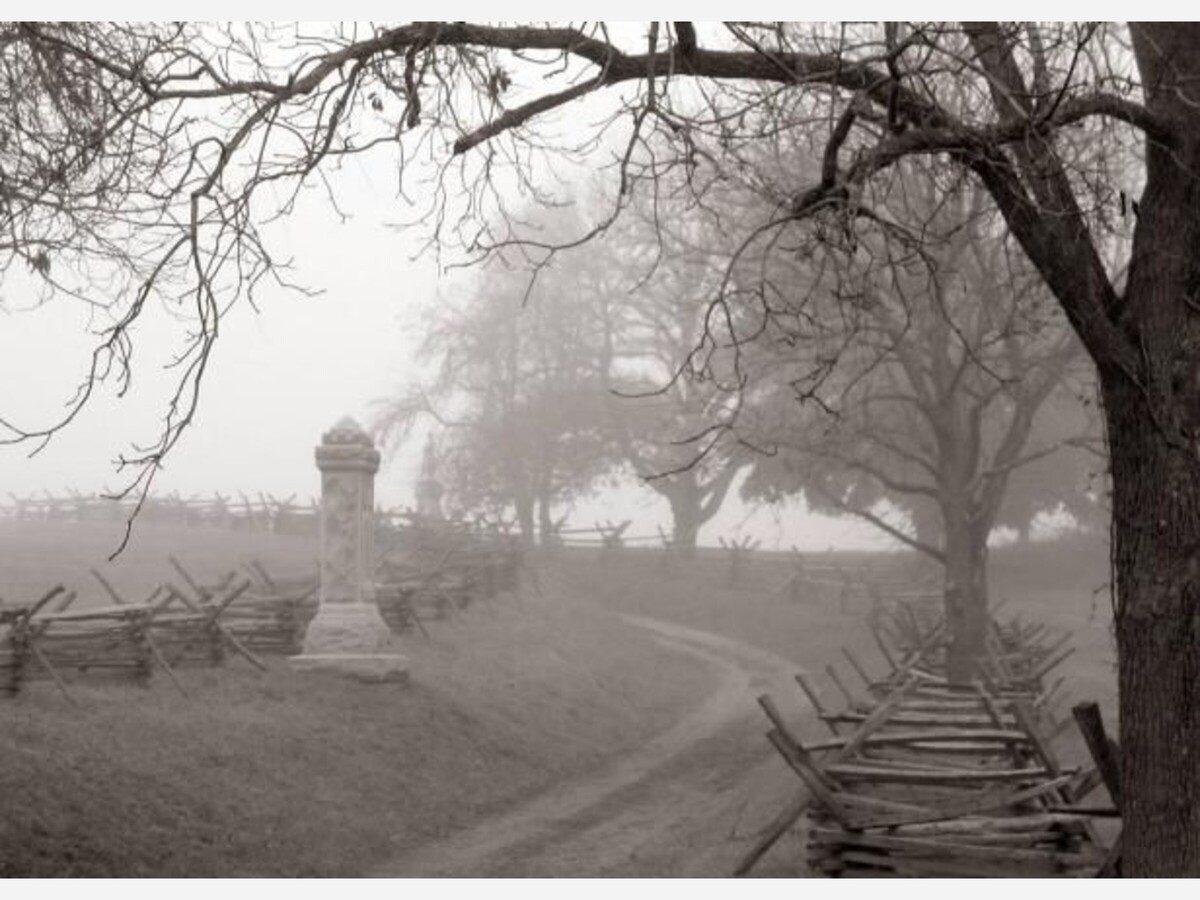
Above: Bloody Lane Trail, Maryland. As a result, visitors report seeing ghostly soldiers both day and night. Many soldiers are buried around Burnside's Bridge, and phenomena include witnessing balls of blue light, hearing drumming, gunfire and battlefield songs and smelling gunpowder.
Add a spooky twist to your hike
Haunted trails to avoid—or check out—in the watershed
BY RACHEL FELVER, chesapeakebay.net
 Jefferson Rock lies along the Appalachian Trail outside of Harper's Ferry, W.Va., and is said to be haunted by a little girl and her puppy. (Photo courtesy of Jen Goellnitz/Flickr CC BY-NC 2.0)
Jefferson Rock lies along the Appalachian Trail outside of Harper's Ferry, W.Va., and is said to be haunted by a little girl and her puppy. (Photo courtesy of Jen Goellnitz/Flickr CC BY-NC 2.0)Fall is one of the best times of the year in the Chesapeake Bay watershed to get outside for a hike. This year, more folks than ever are taking advantage of the crispness in the air and the dazzling array of foliage that blankets our region. But whether you are a newbie hiker or a seasoned professional, there’s more than just changing leaves to look out for when you are out on the trails—keep an eye out for the spirits of Civil War soldiers, polite apparitions who offer you coffee or down right mean ghosts who will push you down a hill . Read on to discover some of the more notorious and haunted hiking trails around the watershed…if you dare.
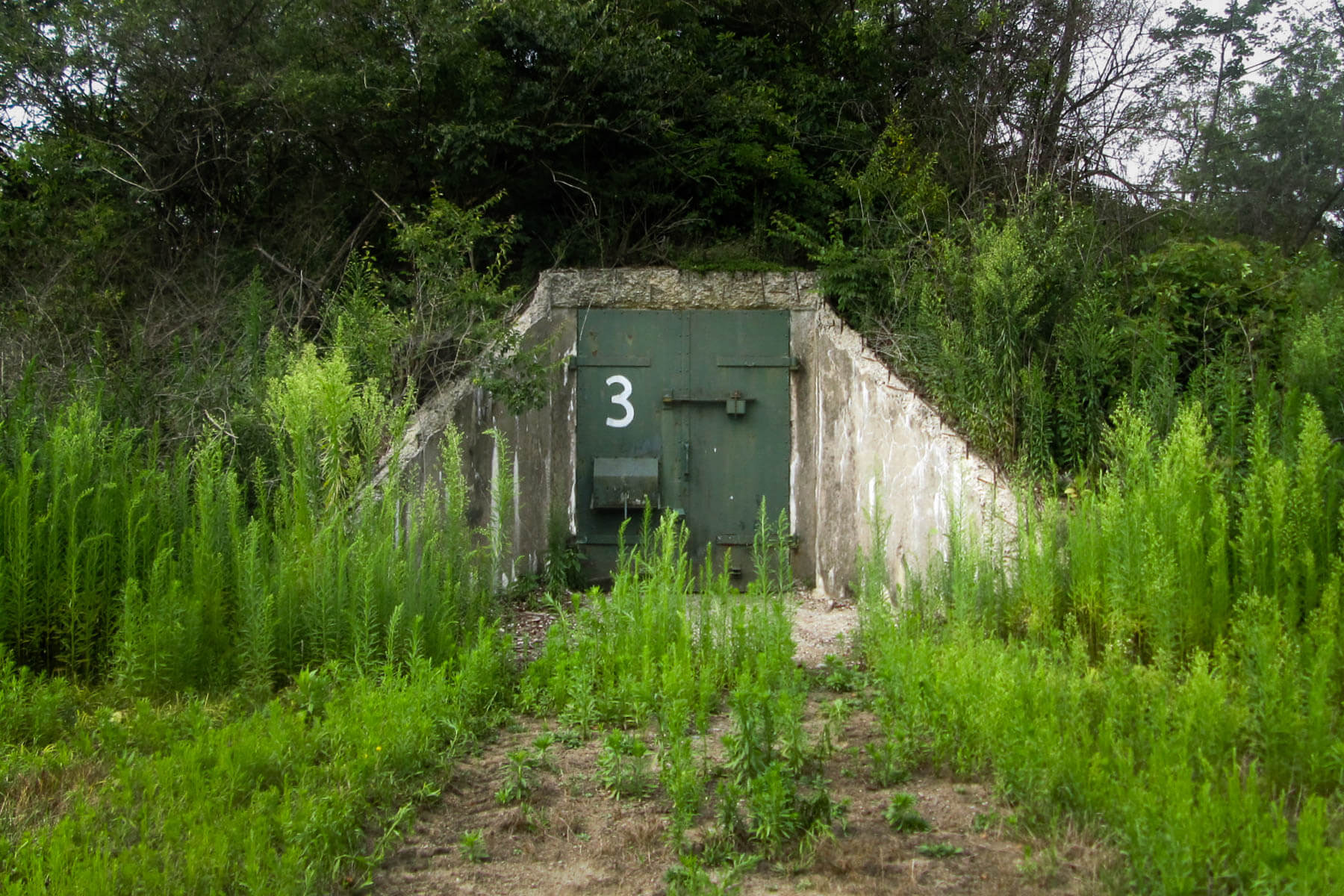
(Photo courtesy of brianmuth1/Wikimedia)
In 1942, the federal government purchased land near the town of Alvira, Pennsylvania to build an ordnance depot that contained approximately 150 bunkers to house munitions. This land purchase forced the residents of the town to leave, and the government simply razed the town, but left its small cemetery alone. After the end of World War II, the military no longer needed the storage and the bunkers were left empty in the surrounding wilderness. Hikers can explore the abandoned bunkers in Allenwood Forest, but visitors have reported hearing voices near the prison, rustling sounds and the premonition that they are being watched.
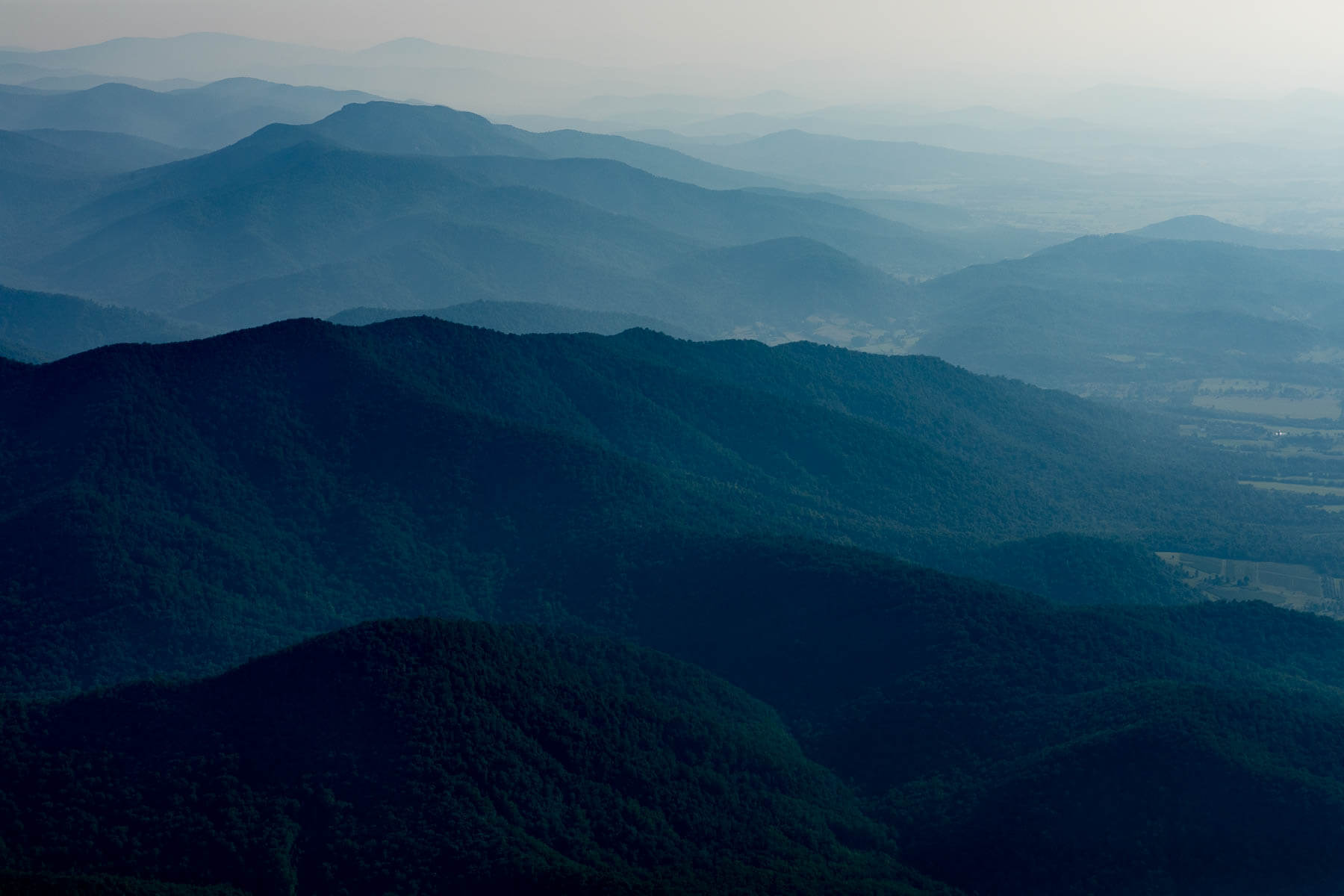
(Photo by Will Parson/Chesapeake Bay Program)
There are several stories of restless spirits that roam the entire length of the 2,190 miles of the Appalachian Trail, but the Commonwealth of Virginia seems to have more than their fair share. A four-mile portion of the trail, located in the George Washington National Forest, was the scene for the gruesome discovery of the body of Ottie Powell in April 1892. Ottie, a four-year-old boy, had gone missing the previous November when he was searching for firewood while on recess from school. While no one truly knows what happened to Ottie on that November day, it is believed that he panicked and made a seven-mile climb up the mountain before eventually falling victim to fatigue and freezing temperatures.
In 1968, a bronze plaque was laid at the top of Bluff Mountain to commemorate the spot where Ottie Powell’s body was found. Bluff Mountain offers spectacular views, so it is still a popular place for hikers to visit. However, many report feeling an eerie, strange feeling when they reach the top of the mountain. And in 2009, one hiker awoke to the sound of crying in the night during a thunderstorm. When lightening struck, he reported seeing the figure of a little boy crouched in the corner of a nearby hiker’s shelter—that vanished almost immediately.
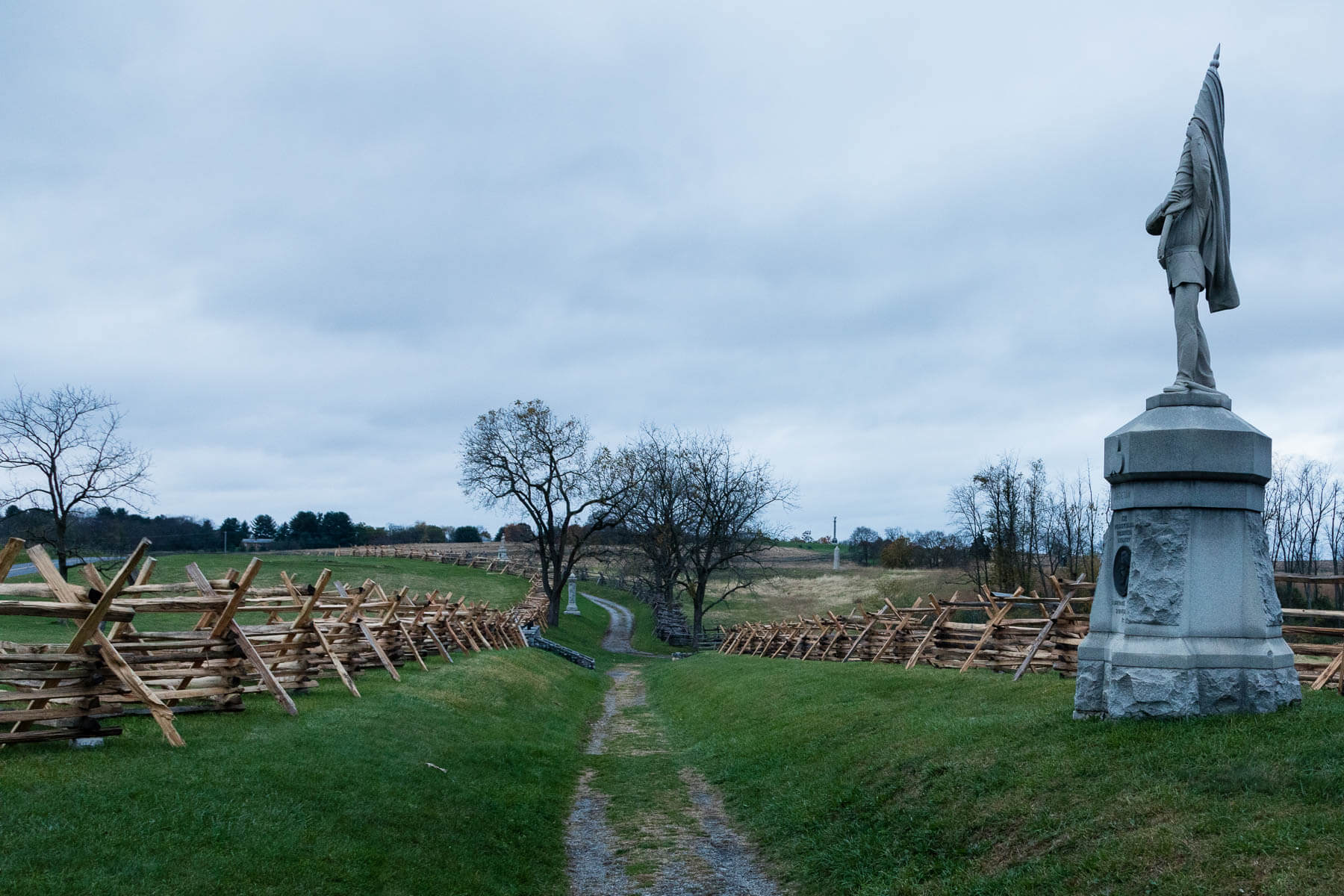
(Photo by Will Parson/Chesapeake Bay Program)
It’s commonly known that the Battle of Antietam was the bloodiest battle of the Civil War. On that gruesome day in 1862, over 23,000 men were wounded, killed or reported missing. A period of intense fighting took place on a sunken path in-between two farms that came to be known as Bloody Lane Trail. When fighting ceased, thousands of bodies were piled up on the sunken path awaiting burial. According to lore, it is common to still hear gunfire, smell gunpowder and see men in Confederate uniform walking down the lane. Others have reported hearing the sounds of Christmas carols coming from the old Observation Tower—exactly where a regiment of Irish soldiers were stationed with a battle cry that mimicked, “Deck the Halls.”
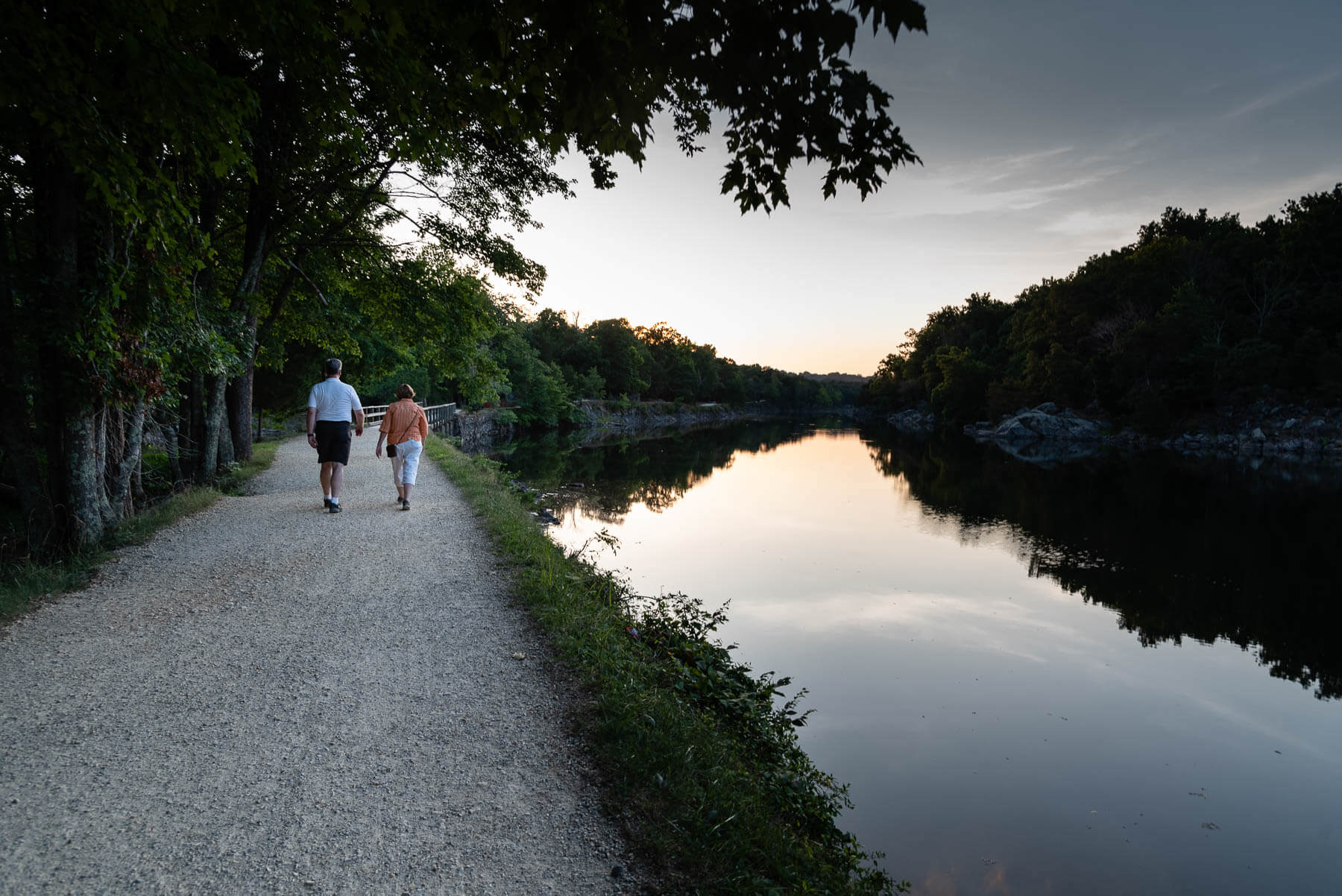
(Photo by Kaitlyn Dolan/Chesapeake Bay Program)
The Civil War is responsible for many of the hauntings throughout the Chesapeake Bay watershed. In October 1861, several Union troops were driven downstream the C&O Canal where their boat capsized. It was reported that several bodies floated all the way into Washington, D.C. This area of the canal is now referred to as Haunted House Bend and hikers along the towpath have reported strange noises, terrible screams and the apparitions of soldiers and restless mules.
This isn’t the only haunted stretch of the C&O Canal Towpath. After the Civil War, the Maryland Mine was opened near what is today the Great Falls Visitors’ Center, after gold was discovered in the Potomac River. However, in 1906, a freak accident caused an explosion near the mine, destroying buildings and killing one man. After this event took place, miners reported hearing footsteps, only to turn around and find nothing there. Horses refused to enter the mines and knocks on doors revealed no one on the other side. A night watchman reported seeing a ghost of a man with eyes of fire and a long tail climbing out of the mine shaft; he became known as the tommyknocker of the Maryland Mine.
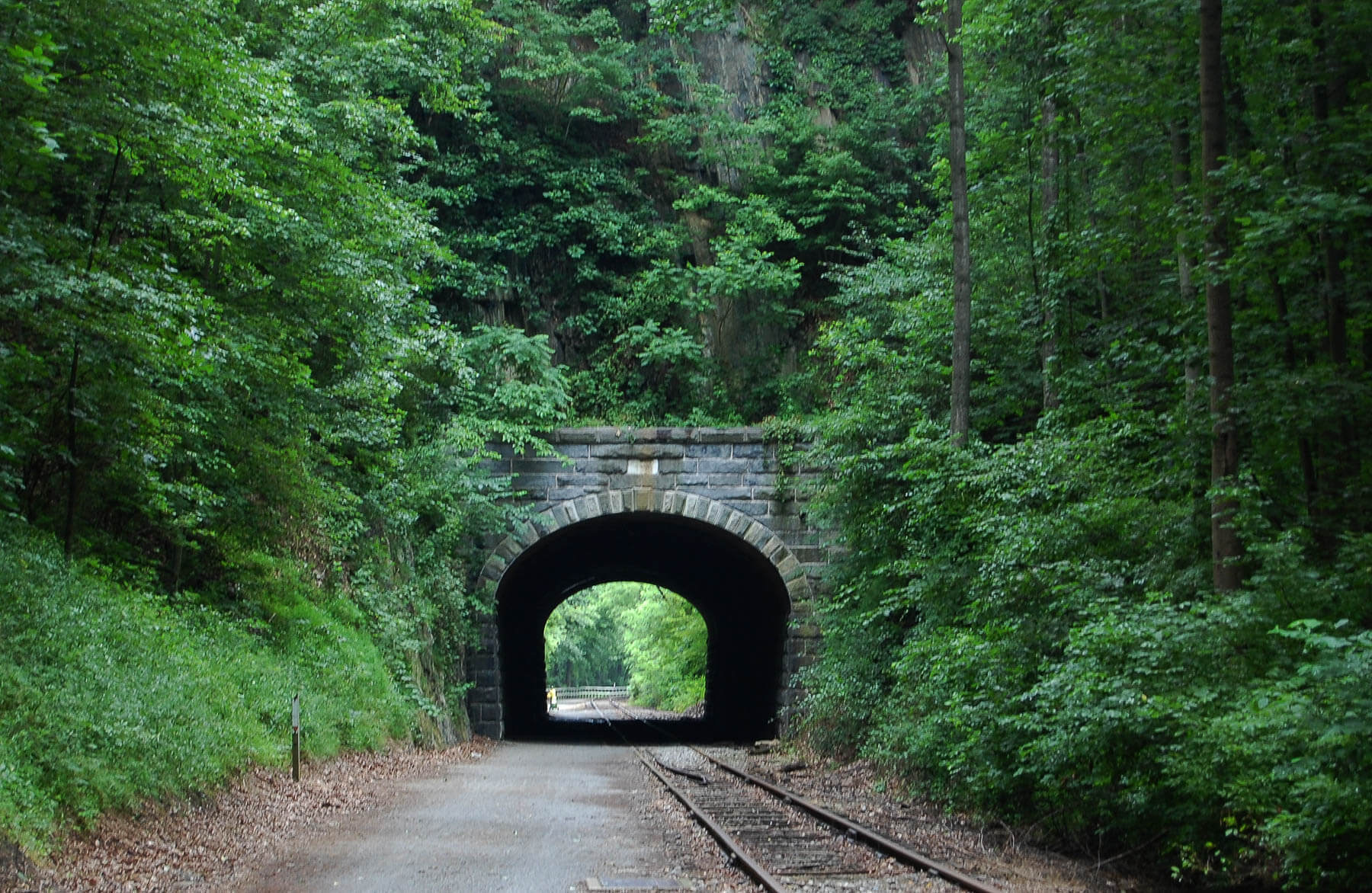
(Photo courtesy of ugardener/Flickr CC BY-NC 2.0)
Once a bustling train route that carried President Lincoln to deliver the Gettysburg Address and to his own funeral, the Heritage Rail Trail near York, Pennsylvania is now well-known among hikers for its consistent, easily walkable route. Along the trail lies Howard Tunnel, built in 1838, making it the oldest, continuously operating railroad tunnel in the world. People have reported the strong smell of coffee when nearing the tunnel and hearing someone ask, “anyone want coffee?”
Hikers on the trail between Seven Valleys and York, Pa. have also met the spirit of Hiram Hall. In the late 1880s, 10-year-old Hiram tried to jump onto a moving train and instead fell onto the tracks, where the train ran over him. Apparently, the ghost is identifiable as Hiram—since the apparition is covered with scars from the train accident.
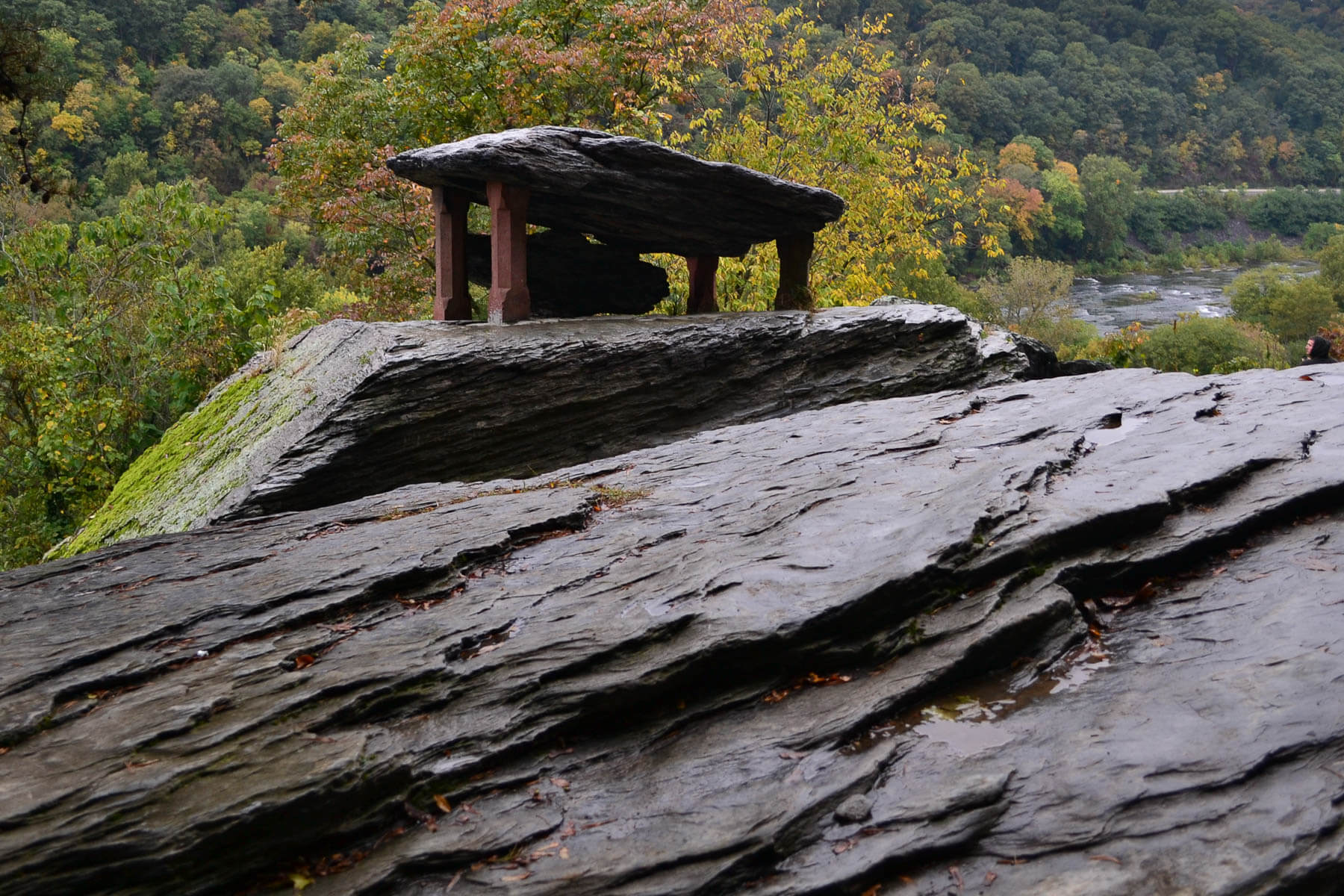
(Photo courtesy of ebarney/Flickr CC BY-NC 2.0)
Continue hiking up the Appalachian Trail and you’ll come to Jefferson Rock in Harpers Ferry, West Virginia. The rock is named after Thomas Jefferson, who traveled through the area on the way to Philadelphia in 1783. It offers beautiful views of the confluence of the Shenandoah and Potomac rivers. But folks hiking at nighttime have encountered the apparition of a young girl in a long, white dress with a puppy who tries to hold your hand while hiking. They’ve also reported encountering less-than-friendly spirits who have broken flashlights, pushed them down hills or dropped tree branches on their heads. While many have tried to figure out who these ghosts may be, their previous identity remains a mystery.
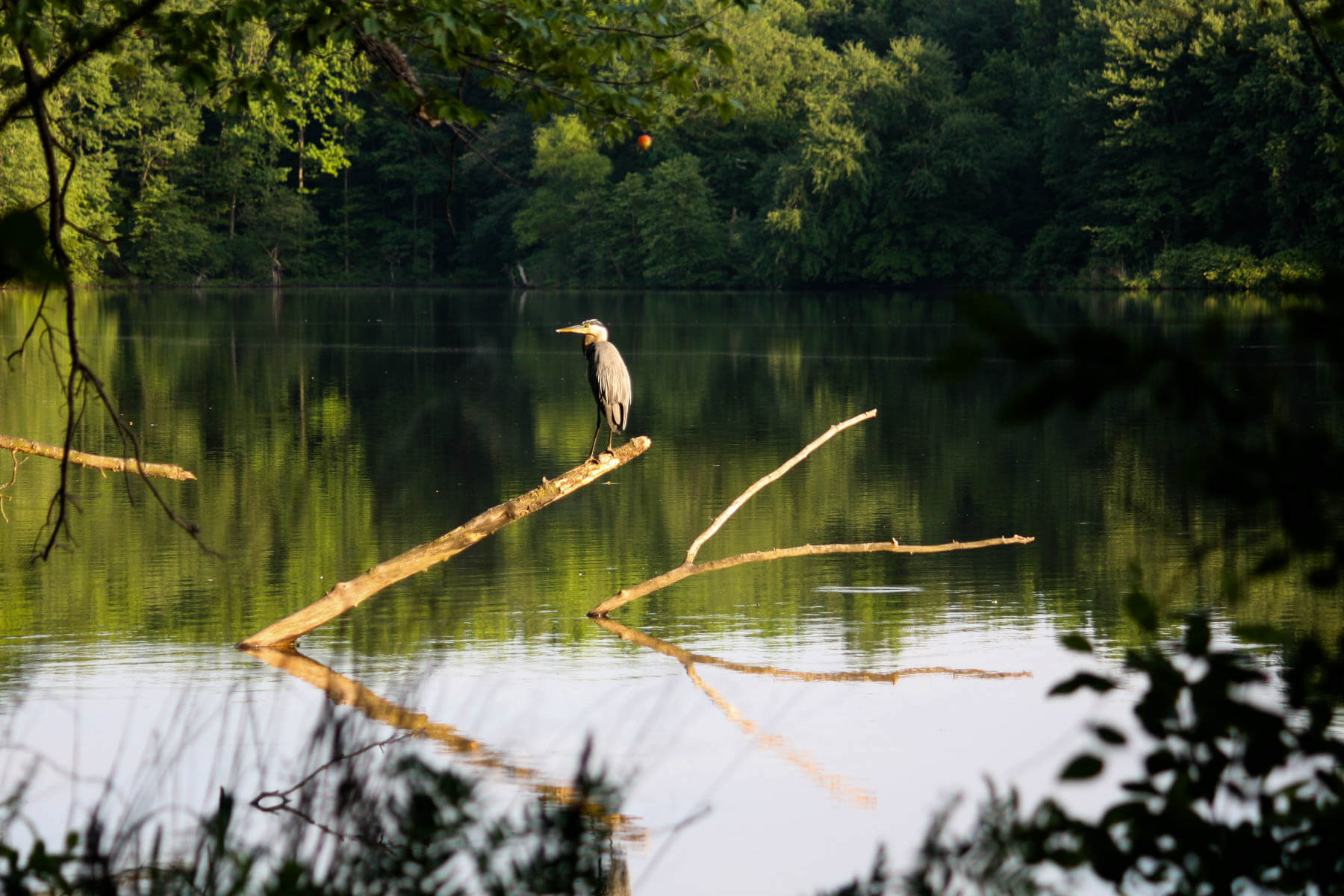
(Photo courtesy of jaycantroot/Flickr CC BY 2.0)
Lums Pond State Park offers a peaceful respite for Delaware residents and visitors looking for a quiet place to hike, fish or kayak. It also seemed like the perfect spot for a young girl who had ran away from her nearby home to take refuge in the 1870s. Sadly, it was not: she encountered a man camping in the woods and met her violent demise. A massive manhunt took place when her body was found, but her killer was never caught. Her spirit still haunts the park today and visitors often remark that they can hear her final screams, especially near the popular Swamp Trail.
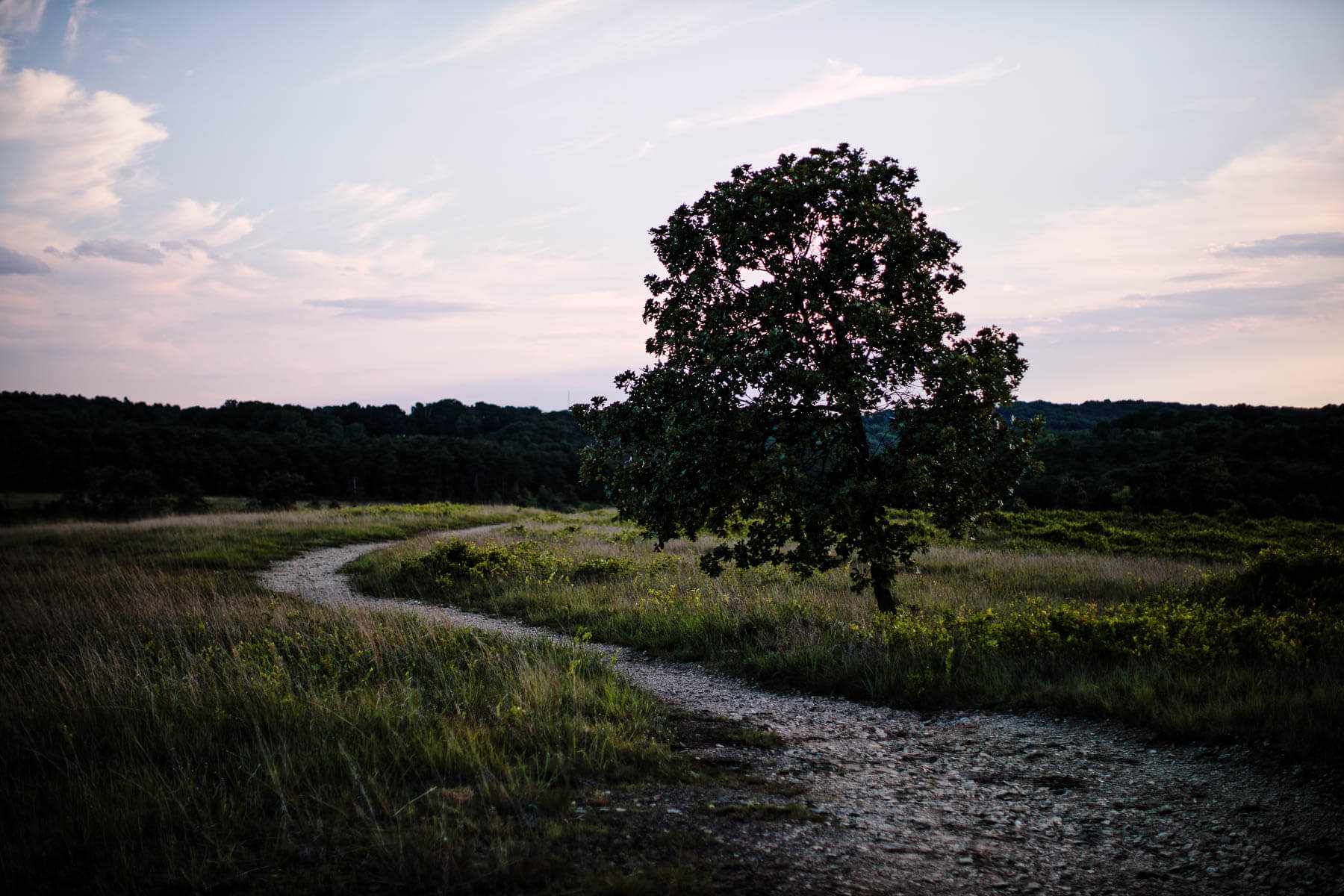
(Photo by Carlin Stiehl/Chesapeake Bay Program)
Soldiers Delight is well-known for having the largest remaining serpentine ecosystem in the eastern United States. But it’s also famous for a horrific crime. In 1751, John Berry brutally murdered his stepmother and nearly killed her husband in an attempt to take over the family farm. The crime outraged the historic Governor’s Commission, so a special sentence was imposed on Berry. He was hanged near the scene of the crime and his body was left outdoors, in chains, to be consumed by nature. The site where his body swung in the wind for so many weeks is now known as Berry’s Hill, right in the middle of Soldier’s Delight.
Rachel is the Director of Communications for the Chesapeake Bay Program. She has the experience of growing up in a headwaters state--Pennsylvania--and is now living life right next to the Bay in Maryland. After obtaining her masters' in environmental policy and management from the University of Pittsburgh, she spent almost nine years with the Environmental Protection Agency before a stint with the National Aquarium. She loves to explore the watershed by hiking, paddleboarding and kayaking.